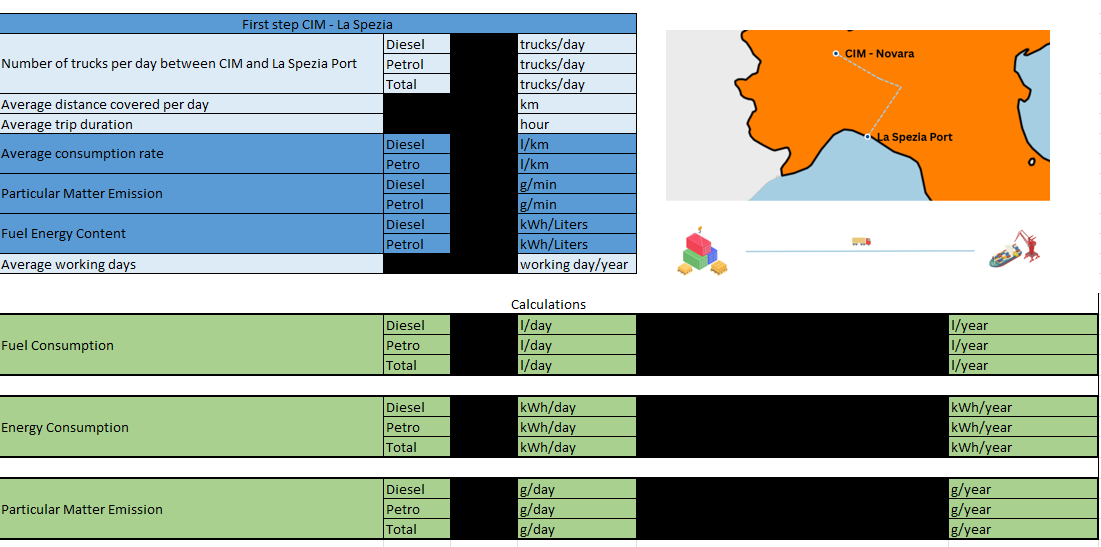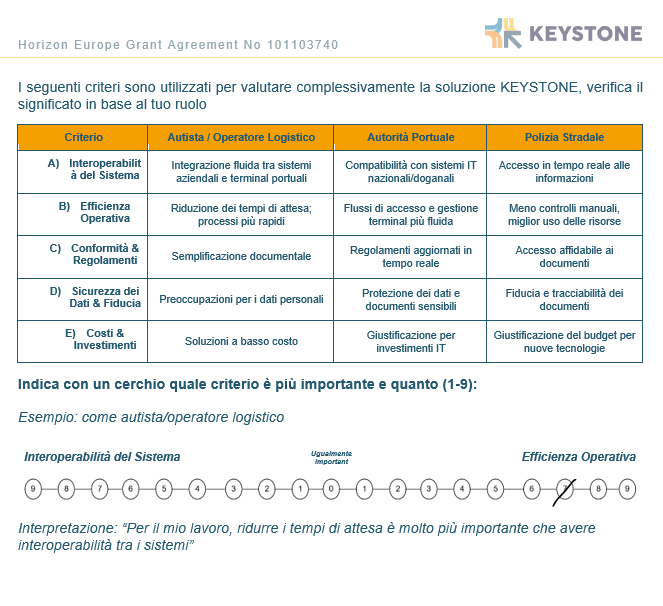A 360° Evaluation: How KEYSTONE Measures Technical, Societal, and Economic Benefits
Calculation sheet screenshot (data censored)
The record sheet used for the pilot sites (in Italian)
A central part of the KEYSTONE project is to evaluate how the innovative solutions created within the project, the KEYSTONE web application, performs under real-world conditions. With the piloting activities already underway, the scope of the evaluation is clear: to verify the usability of the KEYSTONE web application, its compliance with regulatory frameworks, and data accuracy. Through the evaluation activities, KEYSTONE partners will gain an understanding of the web application's impact, encompassing technical, environmental, societal, and economic evaluations, thereby bringing tangible value to users and society.
Let us review the various dimensions that evaluation spans.
Practical performance: A set of KPIs will evaluate whether the web application advances interoperability, safety, and efficiency across operations in the transport and logistics sectors by saving time, reducing administrative burden, and functioning reliably.
User perspective: KEYSTONE centres on providing a web application that is user-friendly, with both its frontend and backend featuring easy design, allowing all users to have a seamless experience.
Wider impact: The environmental and sustainable impact of the web application will also be evaluated, as the project contributes to the objectives of the Green Deal.
Cost-effectiveness: By applying cost-benefit methods, it will be assessed whether the solutions deliver genuine value for money.
Decision support: By using the Analytic Hierarchy Process (AHP) to compare alternatives and highlight trade-offs across different criteria, this analysis will be very helpful not just to evaluate the project, but also to exploit new solutions.
Overall, during the evaluation of the project, the KPIs will be continuously evaluated to track achievements against targets.
By combining data-driven analysis with direct user feedback, cost-effectiveness studies, and advanced multi-criteria methods, KEYSTONE ensures that its results are not just effective on paper but also practical and meaningful. This rigorous evaluation process feeds directly into the refinement of solutions, making them more robust, user-friendly, and ready for broader adoption.
Author: Paulo Cantillano-Lizana (ICOOR)



